Tips for snakes and vipers

Large-eyed pit viper (Trimeresurus macrops). Photo taken in Virachey national park, Cambodia. Copyright Paul Bertner 2013.
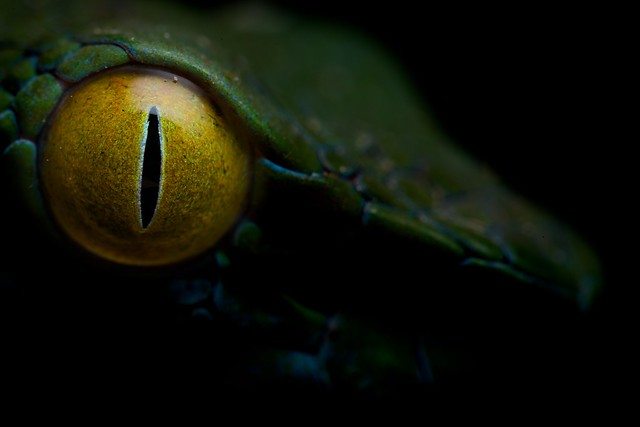
Large-eyed pit viper (Trimeresurus macrops) photographed in Kbal Spean, Cambodia. Copyright Paul Bertner 2013.

Large-eyed pit viper (Trimeresurus macrops) photographed in Virachey national park, Cambodia. Copyright Paul Bertner 2013.

White-lipped pit viper (Trimeresurus albolabris) photographed in Kbal Spean, Cambodia. Copyright Paul Bertner 2013.
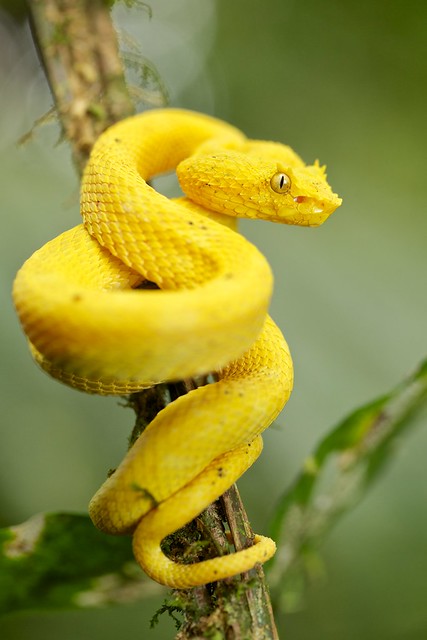
Golden eyelash pit viper (Bothriechis schlegelii) photographed in La Selva biological reserve, Costa Rica. Copyright Paul Bertner 2013.

Golden eyelash pit viper (Bothriechis schlegelii) photographed in La Selva biological reserve, Costa Rica. Copyright Paul Bertner 2013.

Golden eyelash pit viper (Bothriechis schlegelii) photographed in La Selva biological reserve, Costa Rica. Copyright Paul Bertner 2013.

Golden eyelash pit viper (Bothriechis schlegelii) photographed in La Selva biological reserve, Costa Rica. Copyright Paul Bertner 2013.
I abhor zoos/aquariums and can’t abide by supporting them directly or indirectly through my photography, hence, all these shots were taken in their natural environment.
Getting close

Golden eyelash pit viper (Bothriechis schlegelii) photographed in La Selva biological reserve, Costa Rica. Copyright Paul Bertner 2013.
-

Amazonian palm pit viper (Bothriopsis bilineata) Photo taken from a couple centimeters away with the mpe-65mm. Taken during a day hike at Pantiacolla lodge, Manu national park, Peru.
-

Sumatran pit viper (Trimeresurus sumatranus) Photo taken from about 1 foot away using a pentax 100mm macro lens. Taken during a day hike in Bako national park, Sarawak province, Malaysian Borneo.

Bornean leaf-nosed viper (Trimeresurus borneensis). Photographed in Mulu national park, Borneo. Copyright Paul Bertner 2009.

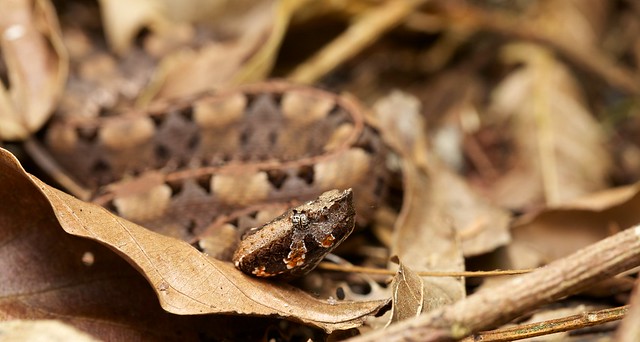
Hog-nosed pit viper (Porthidium nasutum) photographed in Hitoy-Cerrere reserve, Costa Rica. Copyright Paul Bertner 2013.

Hog-nosed pit viper (Porthidium nasutum) photographed in Hitoy-Cerrere reserve, Costa Rica. Copyright Paul Bertner 2013.
Some people might be tempted to say yeah, just use a longer lens. A valid point. But this is inadequate in several regards. First it may give too much working distance. In the jungle, there is often not a lot of space between overlapping foliage and so the more distance between you and your subject the more likely you will get some interference. Secondly, this limits your viewing angles and compositional perspectives. With a 100mm macro, if I wanted, I could get on top, or from the side or below, a 200mm and beyond, if I get on the ground there will inevitably be a log obscuring my view, and I don’t want to climb several meters into a tree if there even is one for a shot. Thirdly I can get a sense for the snake itself increased distance between you and your subject physically will probably show up in the photo as an unintimate portrait. However, getting close enough to feel the flick of the tongue on your cheek, you get a real feel and respect for the creature you are photographing which can’t help but show in your shots. Also less flash power is used and in my opinion, the animal actually grows less stressed over a long shooting period.
1) Be careful! wear long rubber boots and approach slowly and with care. Snakes can strike from 1/2 their body length away. This isn’t taking into account their movement either. So to be safe, as soon as you get within one body length, treat it as a potentially hazardous situation.
2) Read the signs of the body language. A snake that is constantly flicking its tongue is generally aggravated. It is wanting to update its chemosensory information second by second to be ready for anything. It is thus extremely alert and in a high state of tension. You might be tempted to grab a shot of it with its tongue darting out during this time, but you should probably wait until it calms down or else avoid it completely. Though this is species dependent I have noticed this especially with the fer-de-lance (Bothrops atrox). Other species might seem exceptionally calm and this too can be a danger signal. Basically read the signs.
3) Try and keep something in between you and the snake. I generally use an umbrella with a hole cut in it for the lens. If the snake pounces, the hope is that it will go for the umbrella. The tension from the metal hinges is enough to repel the force of the strike. It is also compact and multi purpose. If the snake is on the ground I might approach it very slowly with my boot out, heel forwards to gauge the temperament of the snake. So that if it lunges, it will (hopefully) hit the boot and not my leg.
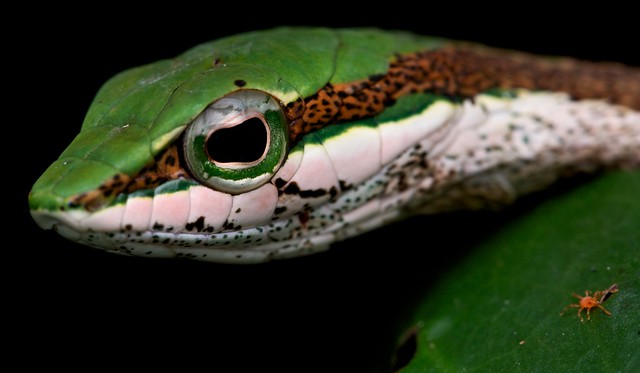
Twig snake (Thelotornis capensis) photographed in Udzungwa national park, Tanzania. Copyright Paul Bertner 2014.

Twig snake (Thelotornis capensis) photographed in Udzungwa national park, Tanzania. Copyright Paul Bertner 2014.
For non-venomous snakes
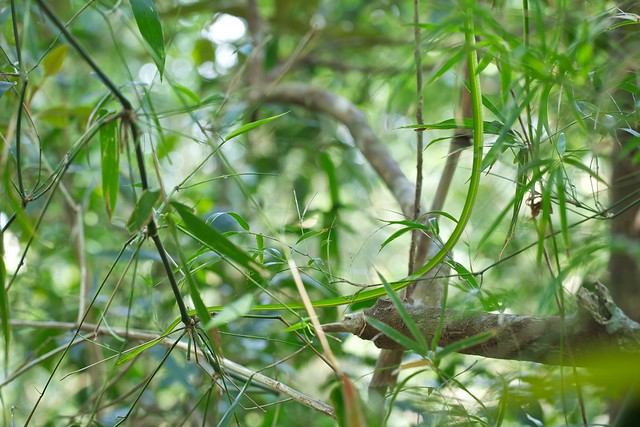
Oriental whip snake (Ahaetulla prasina) photographed in Cuc Phuong nationa park, Vietnam. Copyright Paul Bertner 2013.
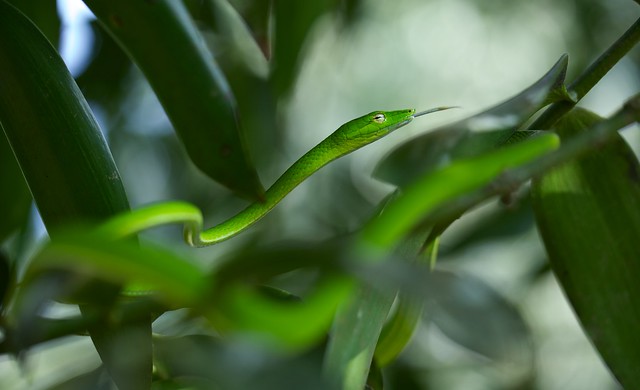
Oriental whip snake (Ahaetulla prasina) photographed in Cuc Phuong nationa park, Vietnam. Copyright Paul Bertner 2013.
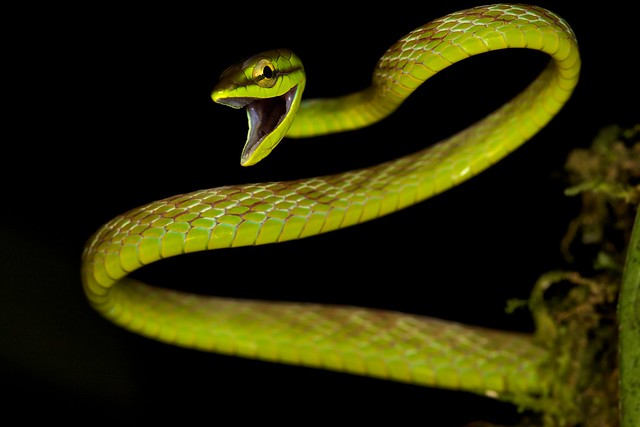
Green vine snake (Oxybelis brevirostris). Photographed in Bilsa reserve, Ecuador. Copyright Paul Bertner 2011.
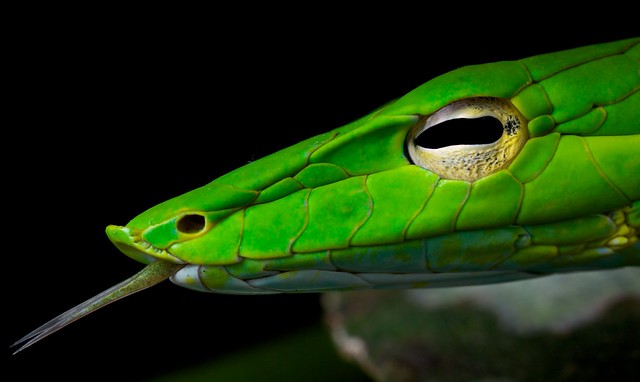
Oriental whip snake (Ahaetulla prasina) photographed in Cuc Phuong nationa park, Vietnam. Copyright Paul Bertner 2013.
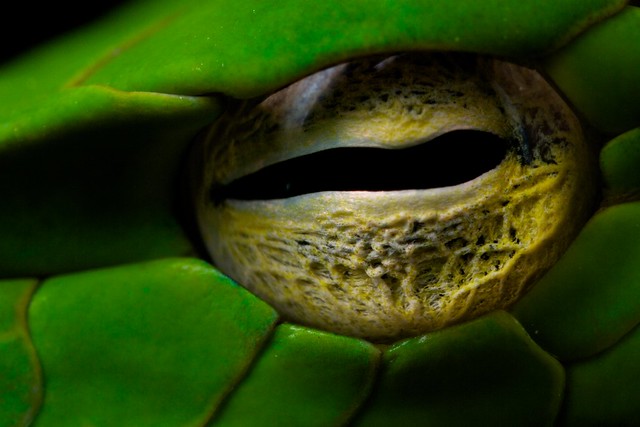
Oriental whip snake (Ahaetulla prasina) photographed in Cuc Phuong nationa park, Vietnam. Copyright Paul Bertner 2013.

Juvenile Usambara garter snake (Elapsoidea nigra) photographed in the Usambara mountains , Tanzania. Copyright Paul Bertner 2014.

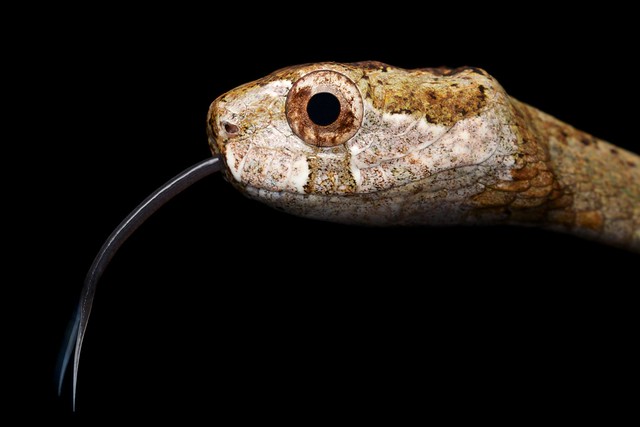
Smooth slug eating snake (Aplopeltura boa) . Photographed in Bukit Barisan national park, Indonesia. Copyright Paul Bertner 2013.

Aplopeltura is a nocturnal snake. Therefore despite it’s wonderful camouflage, my goal of creating an in situ shot fell short of my vision. Perhaps in a quasi studio style environment with sufficient light one might get good results, however with only one or two flashes, there is too much black in the frame and the liana-like camouflaged isn’t shown to full effect. Smooth slug eating snake (Aplopeltura boa). Photographed in Bukit Barisan national park, Indonesia. Copyright Paul Bertner 2013.
Therefore I had to compromise by showing the body detailing moss and lichen-like features juxtaposed with a tree trunk.
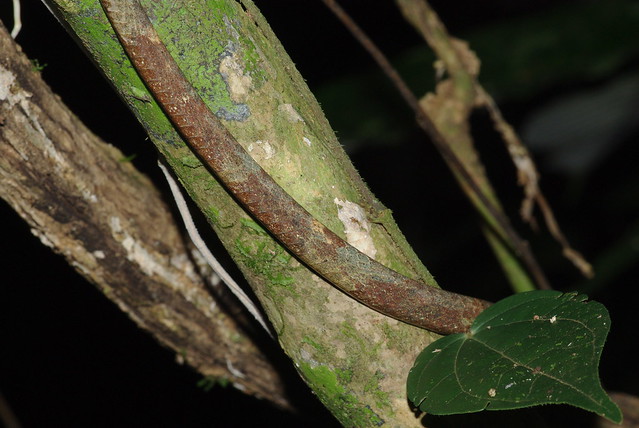
Smooth slug eating snake (Aplopeltura boa). Photographed in Danum Valley Conservation Area, Borneo. Copyright Paul Bertner 2009.
Actions

Snake feeding on an Anole. Photographed in Corcovado national park, Costa Rica. Copyright Paul Bertner 2013.
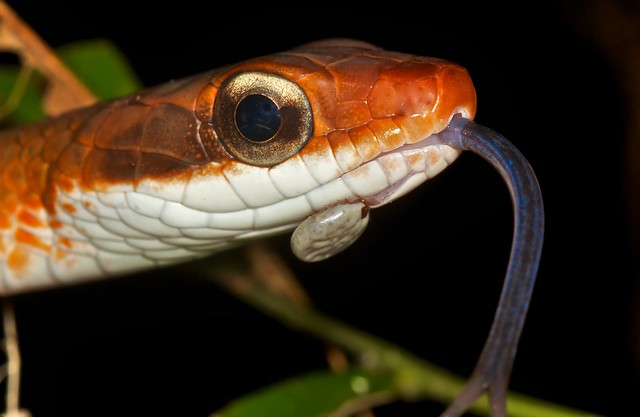
Snake (Chrionius fuscus) with tick. Photographed in Iwokrama reserve, Guyana. Copyright Paul Bertner 2010.
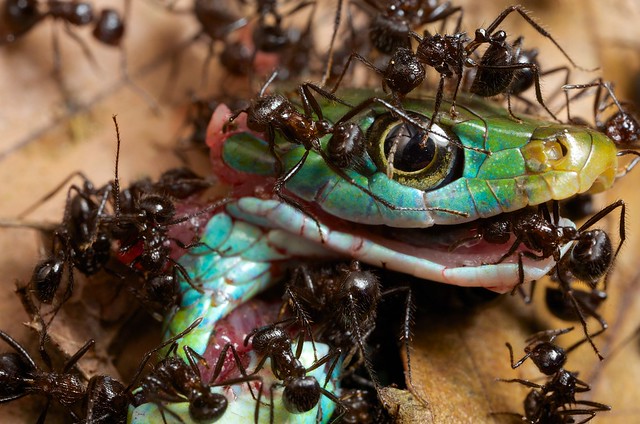
Snakes, venomous or not, are often objects of fear in many equatorial cultures. Ironically, most envenomations occur when locals attempt to kill or drive off snakes. Beyond the purely pragmatic goal of trying to ensure village safety, many foreigners fail to realize that in many traditional cultures, snakes can be associated with evil spirits, and dark magic and thus their mere presence may cause sickness and harm to the village unless they are dispatched. Despite several well-documented aggressive snakes like Africa’s black mambas (Dendroapsis polylepis) or South America’s Fer-de-Lance (Bothrops spp.), most species will attack only when provoked and even then dry bites are far more frequent than envenomations. This non-venomous snake fell victim to a local who probably mistook it for a boomslang or green mamba. Found on the side of a path, ants were making quick work of it. Photographed in the Usambara mountains , Tanzania. Copyright Paul Bertner 2014.

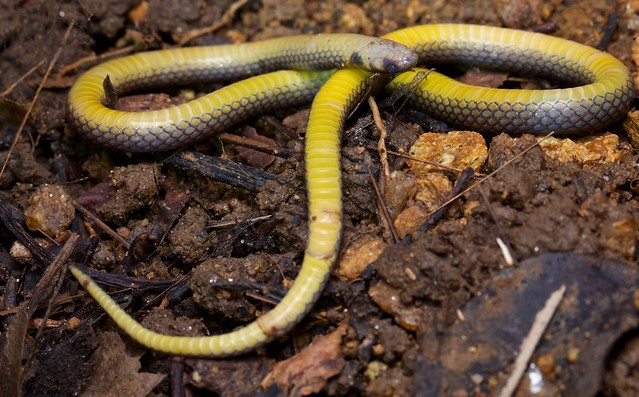
You are completely nuts!!! Great shots though 😌
Very interesting…thanks for all your tips! I am planning to try to capture a B. atrox, and am quite keen on not getting bitten as you might imagine! The umbrella trick sound pretty good, especially as it can fold up very compact. Can you post a photo of this setup?